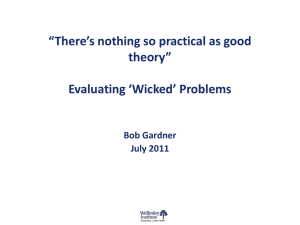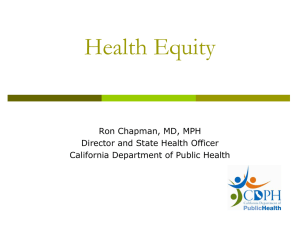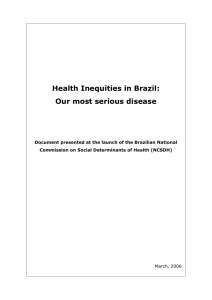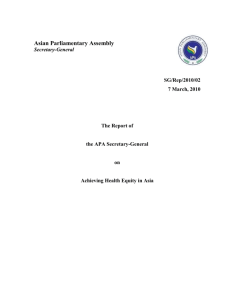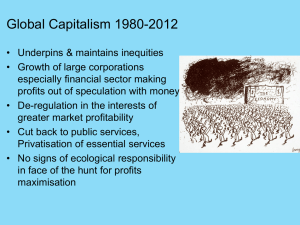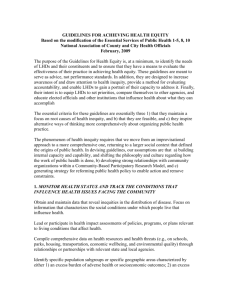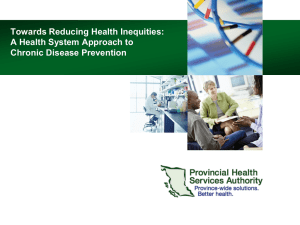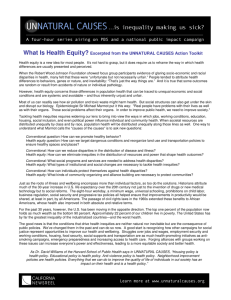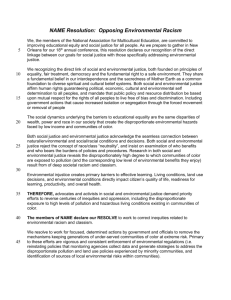Copenhagen - Yves Charpak/RD
advertisement
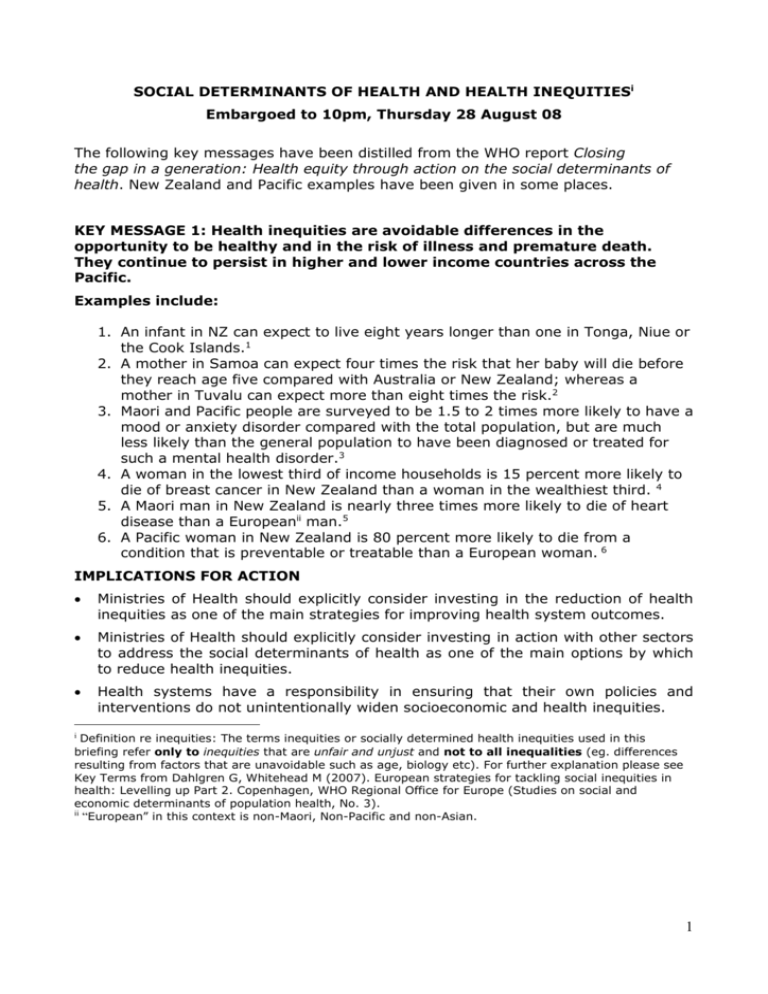
SOCIAL DETERMINANTS OF HEALTH AND HEALTH INEQUITIESi Embargoed to 10pm, Thursday 28 August 08 The following key messages have been distilled from the WHO report Closing the gap in a generation: Health equity through action on the social determinants of health. New Zealand and Pacific examples have been given in some places. KEY MESSAGE 1: Health inequities are avoidable differences in the opportunity to be healthy and in the risk of illness and premature death. They continue to persist in higher and lower income countries across the Pacific. Examples include: 1. An infant in NZ can expect to live eight years longer than one in Tonga, Niue or the Cook Islands.1 2. A mother in Samoa can expect four times the risk that her baby will die before they reach age five compared with Australia or New Zealand; whereas a mother in Tuvalu can expect more than eight times the risk.2 3. Maori and Pacific people are surveyed to be 1.5 to 2 times more likely to have a mood or anxiety disorder compared with the total population, but are much less likely than the general population to have been diagnosed or treated for such a mental health disorder.3 4. A woman in the lowest third of income households is 15 percent more likely to die of breast cancer in New Zealand than a woman in the wealthiest third. 4 5. A Maori man in New Zealand is nearly three times more likely to die of heart disease than a Europeanii man.5 6. A Pacific woman in New Zealand is 80 percent more likely to die from a condition that is preventable or treatable than a European woman. 6 IMPLICATIONS FOR ACTION Ministries of Health should explicitly consider investing in the reduction of health inequities as one of the main strategies for improving health system outcomes. Ministries of Health should explicitly consider investing in action with other sectors to address the social determinants of health as one of the main options by which to reduce health inequities. Health systems have a responsibility in ensuring that their own policies and interventions do not unintentionally widen socioeconomic and health inequities. Definition re inequities: The terms inequities or socially determined health inequities used in this briefing refer only to inequities that are unfair and unjust and not to all inequalities (eg. differences resulting from factors that are unavoidable such as age, biology etc). For further explanation please see Key Terms from Dahlgren G, Whitehead M (2007). European strategies for tackling social inequities in health: Levelling up Part 2. Copenhagen, WHO Regional Office for Europe (Studies on social and economic determinants of population health, No. 3). ii “European” in this context is non-Maori, Non-Pacific and non-Asian. i 1 KEY MESSAGE 2: Health inequities have important economic implications and lead to significant losses to welfare and to the attainment of growth and development targets of a country, irrespective of the prevailing economic conditions. The economic cost associated with avoidable differences in health opportunity is substantial and there is growing evidence that the costs of health inequities are significant.7 Evidence is available of the economic consequences of ill-health, and of the estimated economic gains of improved health – both at the level of the national economy and at the individual and household level. Published studies of the economic and development socioeconomic inequities in health estimate that: costs associated with 1. Calculations of the annual inequity-related losses to health account for 15 percent of the costs of social security systems, and for 20 percent of the costs of health care systems in middle and high-income countries. 2. Inequities-related losses to health as a ‘capital good’ in the European Union, in absolute terms, are estimated at €141 billion. 3. One of the most powerful investments a country can make to its future prosperity is in securing the health and development of all children equally in their early years of life. This produces significant returns over the life course, many times the size of the original investment 8. As such, governments should adopt a strategy of investing in early child development. 9 4. Addressing the social determinants of smoking through an equity-oriented approach to tobacco-control has been estimated to yield significant gains in healthy life-years, reduce health care costs and generate important economic benefits for society. 10 5. Ill-health is both a consequence and a cause of poverty, while health is a pathway out of poverty. More advantage should be taken of the health contribution to the attainment of poverty-reduction strategies and action plans. 11 IMPLICATIONS FOR ACTION Health and economic policy-makers should explicitly consider investing in health and conditions that create equal opportunity to be healthy, as one of the options by which to achieve their economic and development goals Ministries of Health have a key stewardship role to play in scaling up actions that tackle health inequities, integrating them into government development agendas and into their own health care and public health policies and services. 2 KEY MESSAGE 3. There is evidence of promising policies and programmes that are effective in reducing health inequities and tackling the social determinants of health. 12 Examples include: 1. New intersectoral models of governing health, which show positive results including impacts on the social determinants of health and health behaviors as well as ‘wins’ for other sectors including agriculture, labor, tourism and trade. 13 2. Evidence shows how for the same level of economic development, better health status depends on the extent to which additional economic resources generated benefited low-income groups and were invested in public systems for health and education.14 3. Civil society involvement in policy development has been shown as important to improving the design, implementation and outcome of health inequities strategies and to win broader public support for action. 15 4. Internationally a mixture of universal and targeted policies and interventions are being implemented to reduce the gradient in opportunity to be healthy and in exposure to health risks, between different social groups. 16 17 5. Innovations in the design and delivery of public health programmes including accident prevention, TB, smoking and HIV, which address the health and socioeconomic circumstances of the target group, show improved programme impact on self-reported health status, compliance with treatment protocols and reductions in rates of reinfection and risk behaviour. 18 IMPLICATIONS FOR ACTION Health inequities are amenable to change through a combination of universal and targeted policy interventions. Systematic actions to reduce health inequities are possible irrespective of the development conditions and economic circumstances of a country. Ministries of Health should explicitly consider taking action on the social determinants of health as one approach for improving the efficacy of their public health policies and programmes to influence lifestyles. 3 KEY MESSAGE 4: There is significant evidence and a range of tools and support available from WHO to enable countries to put in place and monitor policies and actions that tackle the social determinants of health and reduction of health inequities. The WHO is working with Ministries of Health and their partners across government to provide services, know-how, tools and guidance to reduce socially determined health inequities. These include: 1. Technical support and guidance in the area of performance management of health inequities – including methodologies and approaches to measuring, monitoring and analysing inequities in health and their reduction. 2. Support to policy development and implementation, including generation and testing policy options for reducing socially determined health inequities. 3. Tools and capacity building to assess the impact of policies and investments on the level and distribution of health including health impact assessment and equity focused health impact assessment. 4. Technical support, evidence and methodologies to inform the design and delivery of equity-orientated public health and health programmes and services. 5. Evidence, know-how and tools for building cross-sectoral and whole-ofgovernment approaches to tackle social determinants of health and reduce health inequities, including public health advocacy for agenda setting and alliance building, economic argument for increasing incentives for investing in health and social determinants of health. New Zealand is well placed as many of these tools and evidence are in here. 4 KEY MESSAGE 5: The final report of the Global Commission on Social Determinants of Health (CSDH), established by WHO in 2005 and chaired by Sir Professor Michael Marmot will be released on 28 August 2008. The Report summarises the global picture of health inequities and provides evidence on the role of social factors and pathways leading to increasing health gaps between population groups. Evidence highlights the existence, in countries at all levels of income, of a social gradient determining health: the lower the socioeconomic position, the worse the health. The report recommendations are based on three principles for action, which are relevant for New Zealand and the Pacific: 1. Develop policies that positively influence the conditions of daily life – the circumstances in which people are born, grow, live, work and age. 2. Direct attention at reducing differences in opportunity to be healthy that stem from differences in access to education, employment, social participation and access to services. 3. Measure the problem, evaluate action, expand the knowledge base, develop a workforce that is trained in, and raise public awareness about, the social determinants of health. 5 References World Health Organisation 2005 The world health report 2005 - make every mother and child count http://www.who.int/whr/2005/en/index.html accessed 28 August 2008 2 World Health Organisation 2005 The world health report 2005 - make every mother and child count http://www.who.int/whr/2005/en/index.html accessed 28 August 2008 3 Ministry of Health 2008 A portrait of health – key results of the 2006/07 NZ Health Survey Wellington: Ministry of Health 4 Blakely T et al 2007 Tracking disparity: Trends in ethnic and socioeconomic inequalities in mortality, 1981 -2004 Wellington: Ministry of Health 5 Blakely T et al 2007 Tracking disparity: Trends in ethnic and socioeconomic inequalities in mortality, 1981 -2004 Wellington: Ministry of Health 6 Blakely T et al 2007 Tracking disparity: Trends in ethnic and socioeconomic inequalities in mortality, 1981 -2004 Wellington: Ministry of Health 7 Adapted from: Suhrcke M et al. The contribution of health to the economy in the European Union. Public Health, 2006. 8 Adapted from: Siddiqi, A., Irwin, L.G. & Hertzman, C. (2007). The Total Environment Assessment Model of Early Child Development. Evidence Report for the Commission on Social Determinants of Health, World Health Organization 9 Adapted from: Irwin, L.G, Siddiqi, A. & Hertzman, C. (2007). Early Child Development: A Powerful Equalizer. Final Report for the World Health Organization’s Commission on Social Determinants of Health (http://www.who.int/social_determinants/resources/ecd_kn_final_report_072007.pdf accessed on 31 July 2008). 10 Adapted from: Suhrcke M et al. The contribution of health to the economy in the European Union. Public Health, 2006. 11 Adapted from: PRSPs: Their Significance for Health: second synthesis report. Geneva, World Health Organization, 2004. http://www.who.int/hdp/en/prsp.pdf accessed 31 July 2008 12 Adapted from: Dahlgren G, Whitehead M (2007). European strategies for tackling social inequities in health: Levelling up Part 2. Copenhagen, WHO Regional Office for Europe (Studies on social and economic determinants of population health, No. 3). 13 Evidence can be found at: Buzeti T, Maucec Zatonmik J (2008. Investment for health and development in Slovenia, Programme Mura. Centre for Health and development Murska Sobota Evidence can be found at: Scottish Government Strategy (2008). Vision for Success for Scotland – inequalities outcomes. 14 Adapted from: PRSPs: Their Significance for Health: second synthesis report. Geneva, World Health Organization, 2004. http://www.who.int/hdp/en/prsp.pdf accessed 31 July 2008 15 Evidence can be found at L Bauld and K Judge (2005). Health Improvement Planning in Scotland, an analysis of joined health improvement plans and regeneration outcome agreements. NHS Scotland Publ. Brinkerhoff D, McEuen M (1999) New NGO partners for health sector reform in Central Asia: family group practice associations in Kazakhstan and Kyrgyzstan. Special Initiatives Report 19:1--29 . Cited By Lowenson 2003). http://wwwwds.worldbank.org/external/default/WDSContentServer/IW3P/IB/2004/03/01/000265513_20040301114 512/additional/310436360_20050276093820.pdf accessed 31 July 2008. 16 Brinkerhoff D, McEuen M (1999) New NGO partners for health sector reform in Central Asia: family group practice associations in Kazakhstan and Kyrgyzstan. Special Initiatives Report 19:1--29 . Cited By Lowenson 2003). http://wwwwds.worldbank.org/external/default/WDSContentServer/IW3P/IB/2004/03/01/000265513_20040301114 512/additional/310436360_20050276093820.pdf accessed 31 July 2008. 17 Adapted from: Department of Health. Review of the Health Inequalities Infant Mortality PSA Target. London 2007 18 HM Government PSA Delivery Agreement 15: Address the disadvantage that individuals experience because of their gender, race, disability, age, sexual orientation, religion or belief http://www.hmtreasury.gov.uk/media/C/E/pbr_csr07_psa15.pdf . accessed 31 July 2008. 1 6
